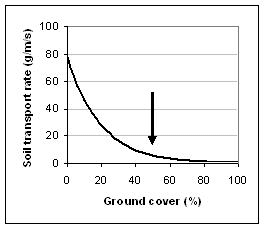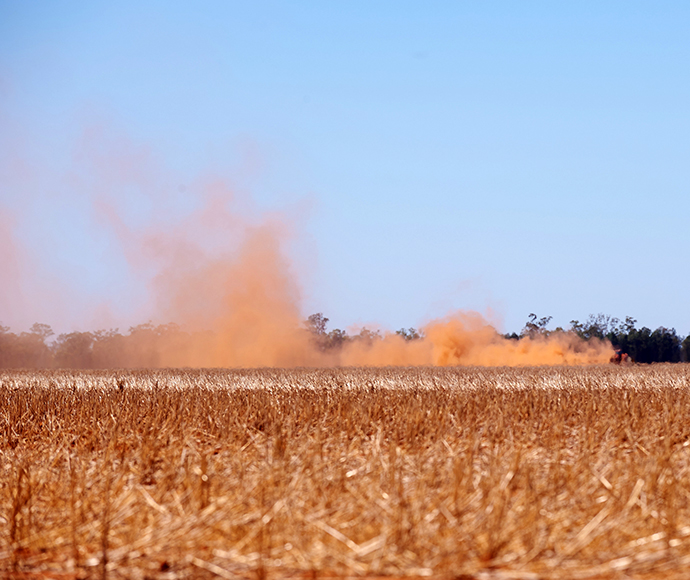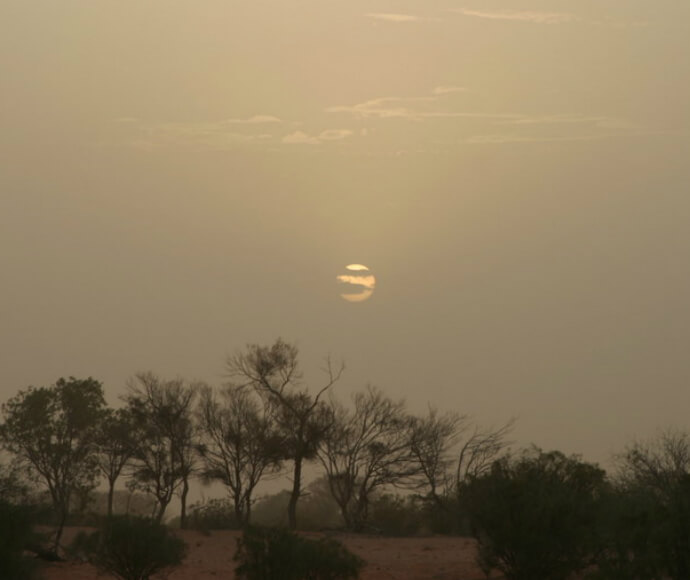Wind erosion is a natural process that moves soil from one location to another by wind power. It can cause significant economic and environmental damage.
Wind erosion can be caused by a light wind that rolls soil particles along the surface through to a strong wind that lifts a large volume of soil particles into the air to create dust storms.
While wind erosion is most common in deserts and coastal sand dunes and beaches, certain land conditions will cause wind erosion in agricultural areas.
It is wind that drives the erosion, but it is mainly the landscape and condition of the land which leads to the most damaging wind erosion.
Impacts
Wind erosion is costly for the economy, human health and the environment. It can lead to soil loss, high cleaning bills, absenteeism, transport delays, sand-blasted crops and retail losses. A single dust storm that occurred on 22–23 September 2009 has been estimated to have cost the NSW economy nearly $300 million.
Wind erosion damages:
- human health as airborne dust can cause asthma and other health problems.
- agricultural production by stripping away the fertile top layers of the soil and organic matter. Wind-blown soil can bury or sandblast pastures, crops and fences, contaminate wool and deposit salt
- the environment when dust chokes creeks and deposits unwanted nutrients and salt, threatening plants and animals and causing blue green algal blooms
- property as built structures can be sandblasted by wind-blown dust and buried in blown sand
- economic activity when dust storms disrupt commercial activities and transport, and create the need for extra cleaning.
Causes
Wind erosion can be caused by activities that reduce ground cover below 50% and remove trees and scrub that act as windbreaks, such as:
- land clearing
- over-grazing by livestock
- cropping.
These activities leave the soil exposed to the wind. Drought causes greater wind erosion because:
- less rain means lower vegetation growth and it is vegetation that binds the soil in place
- less moisture in the soil, makes it easier for soil particles to blow away.
Prevention
You can lower the chances of wind erosion by keeping vegetation cover (such as trees, crop residues and pasture) above 50% and disturbing the soil as little as possible.
The NSW Government provides further information for land managers who want to control wind erosion in Saving soil – A landholder’s guide to preventing and repairing soil erosion.

Graph showing the relationship between ground cover and wind erosion. The arrow marks the level of ground cover required to control erosion.
DustWatch
DustWatch is a community program led by our scientists. It monitors and reports on the extent and severity of wind erosion across Australia. The program aims to:
- use dust as an indicator of the health of the Australian landscape
- increase awareness of the effects of dust, and how to minimise it by maintaining groundcover
- engage citizen scientists with the collection of rigorous objective data from instruments and provide local information
- provide natural resource agencies and landholders with information to make informed decisions on how to maintain groundcover and manage land in a sustainable way
- provide a focal point for communication about dust and its detrimental effect on landscape condition and human health.


